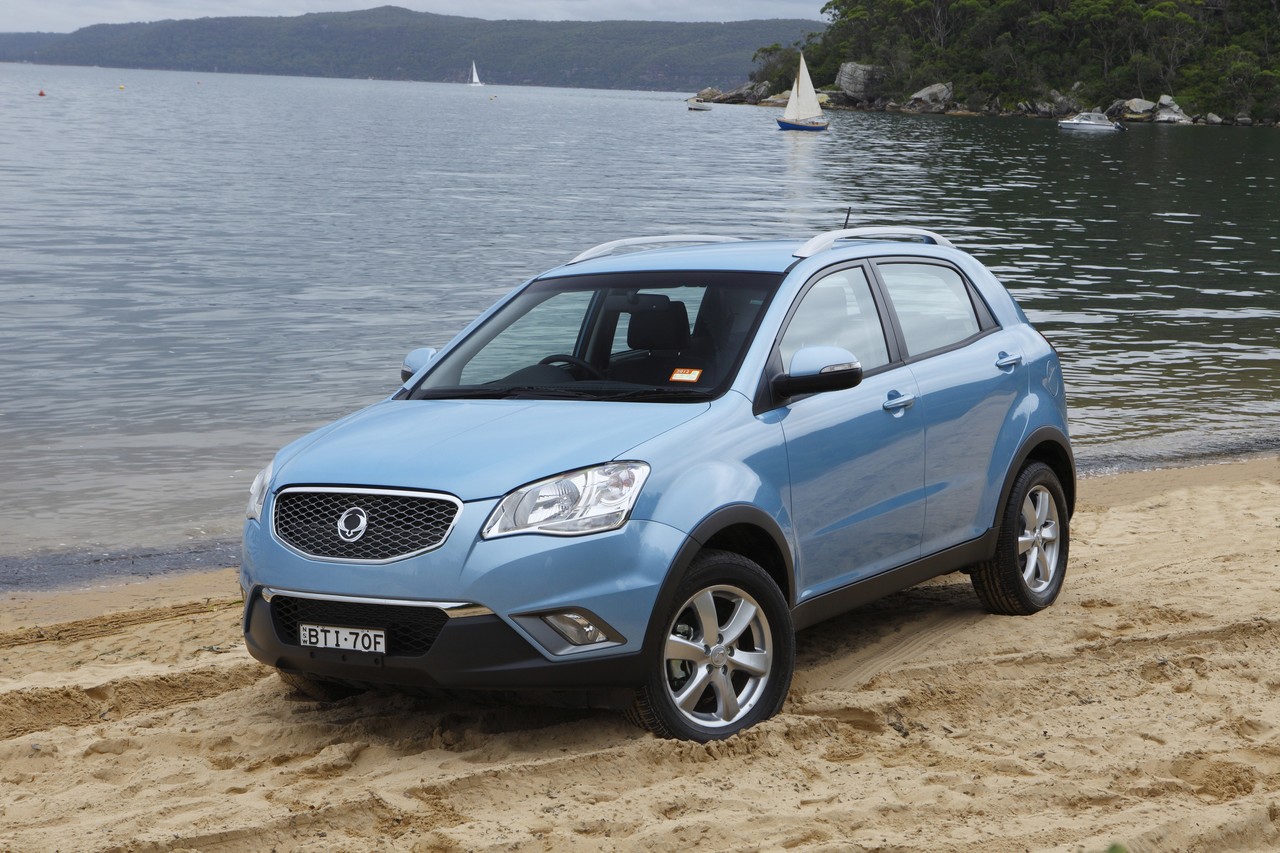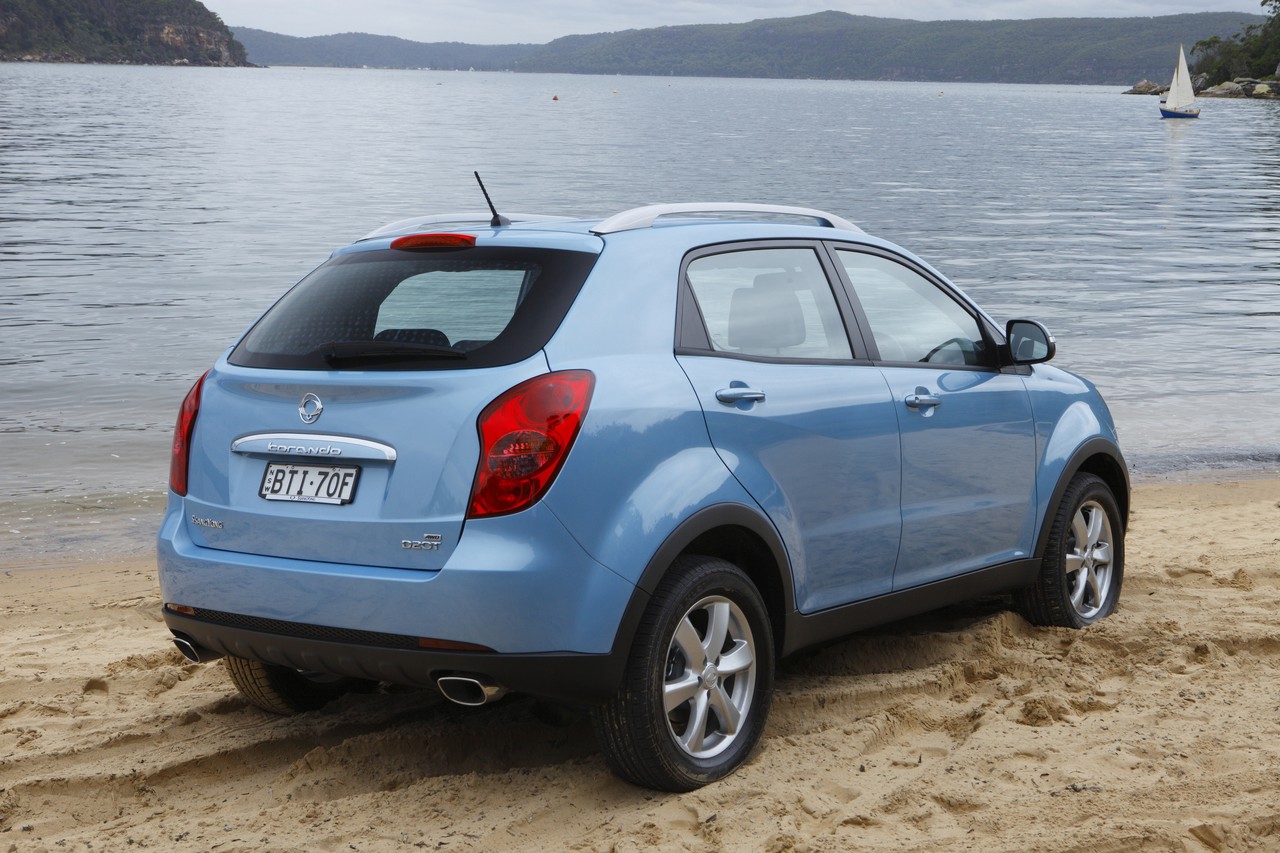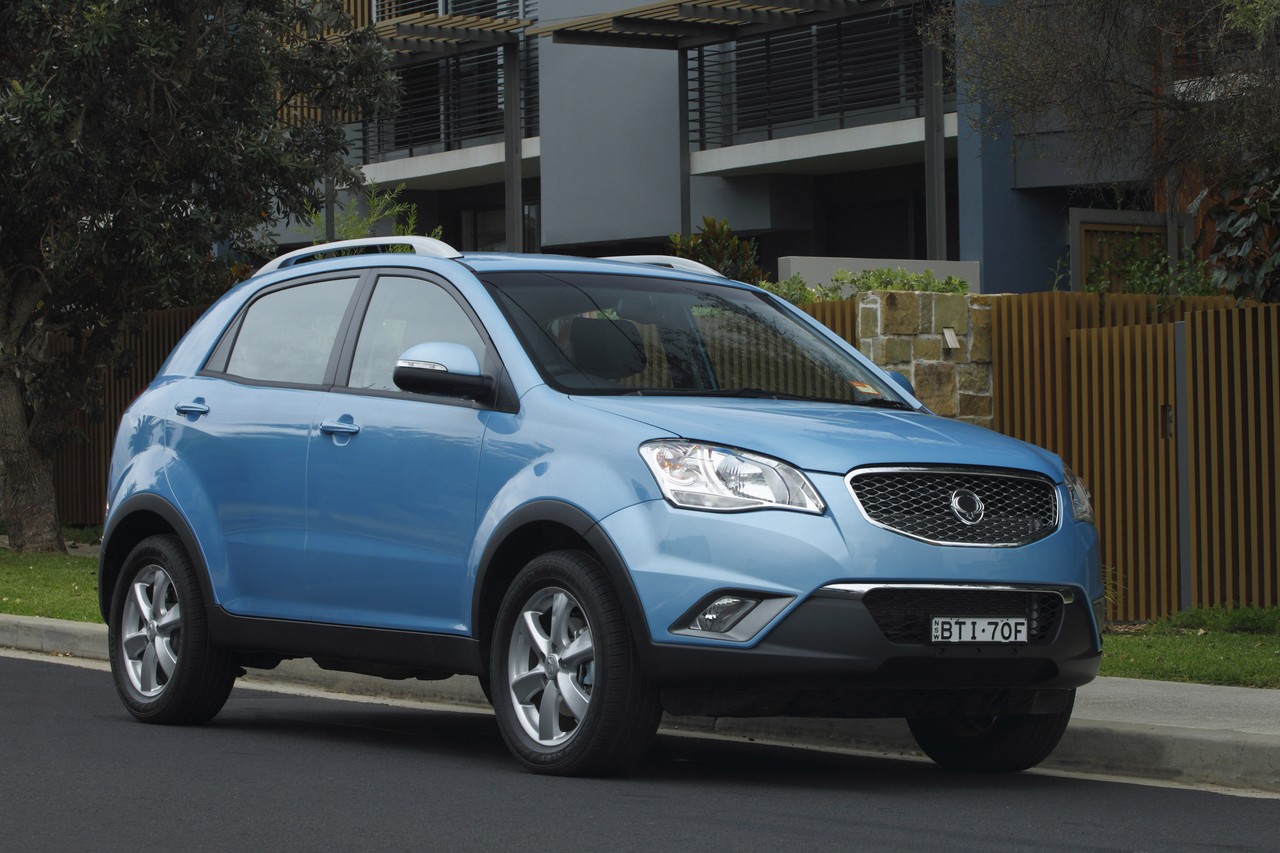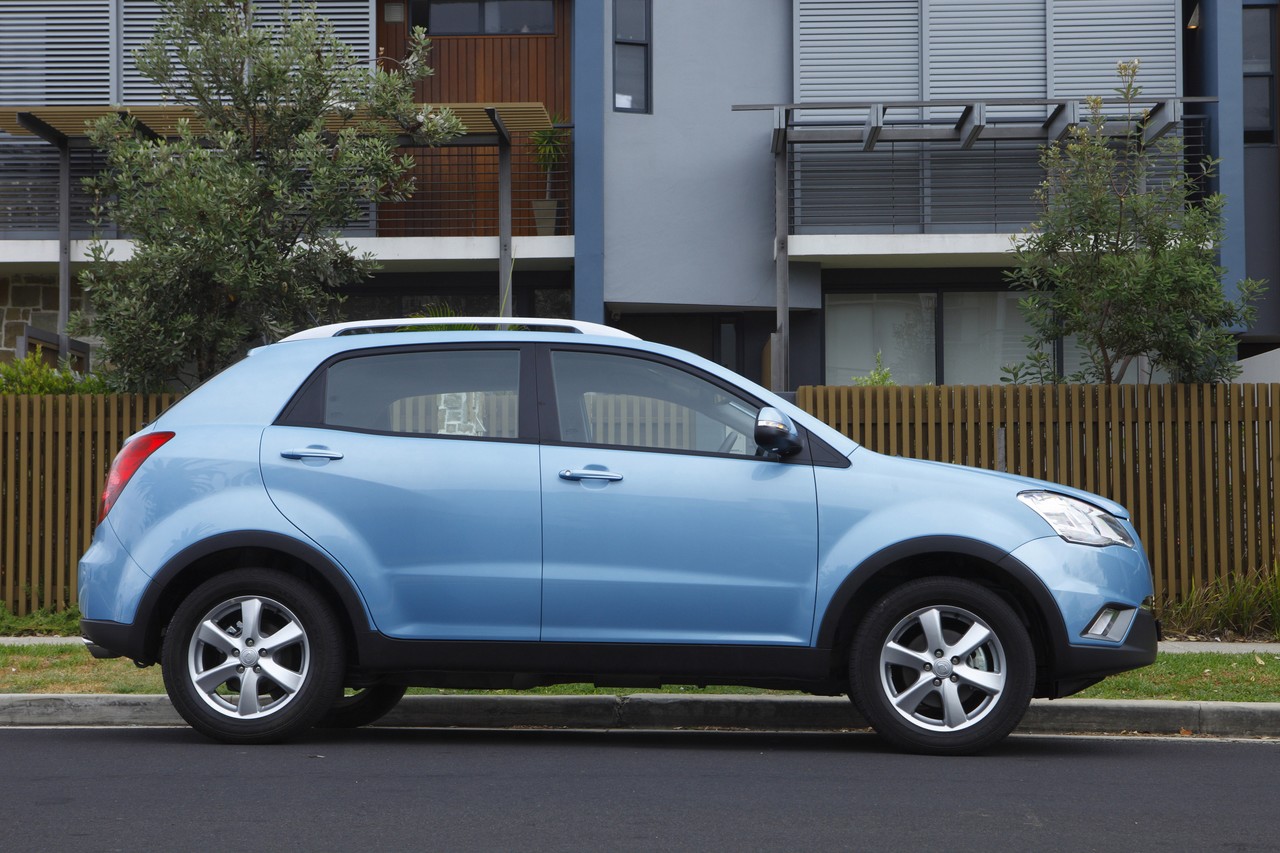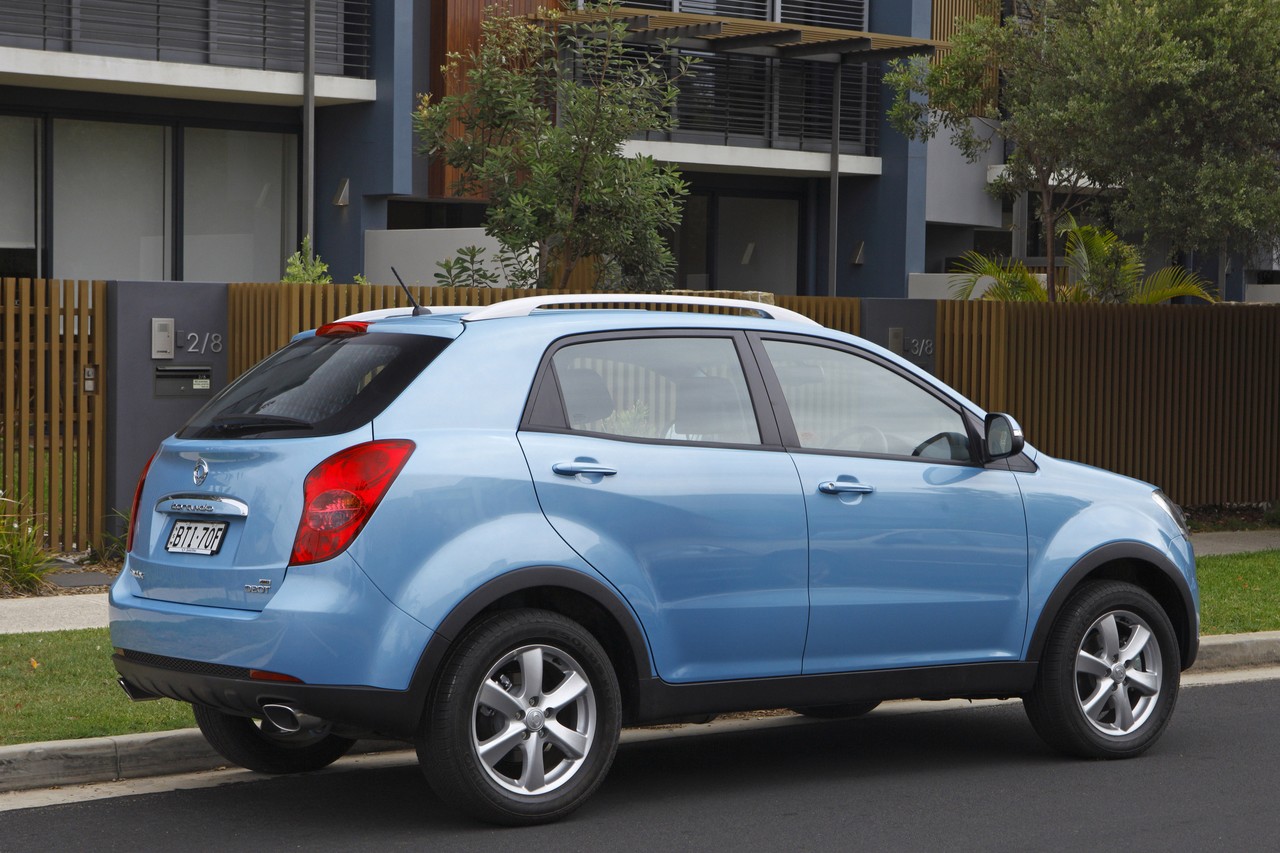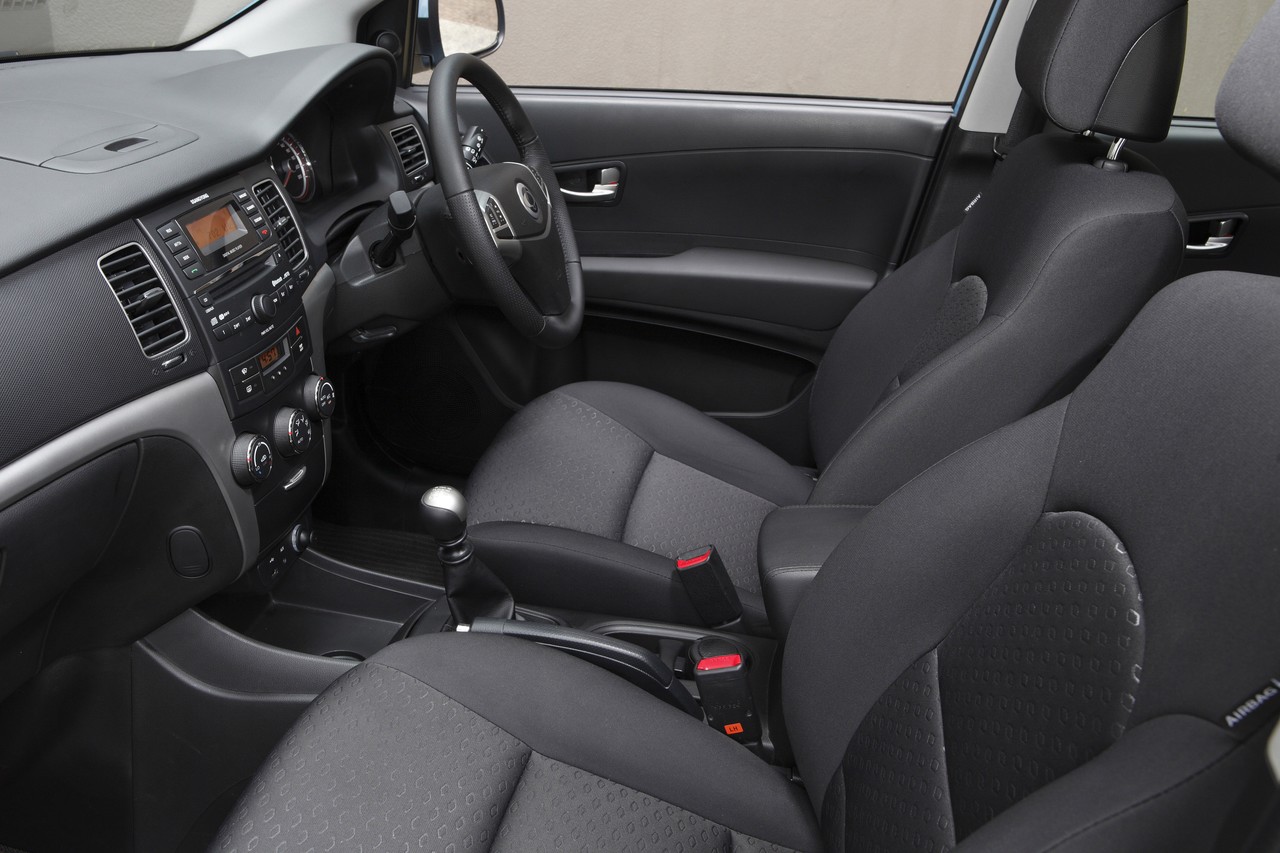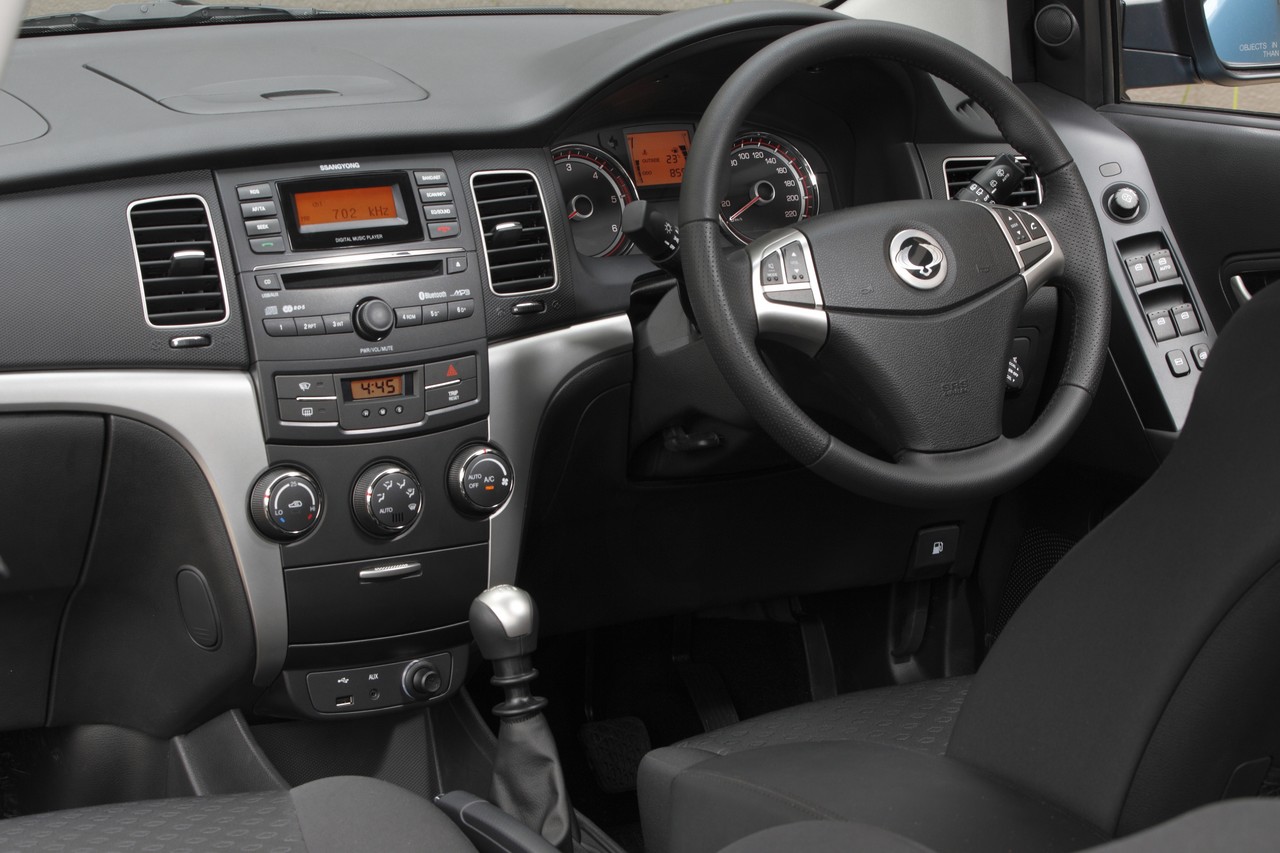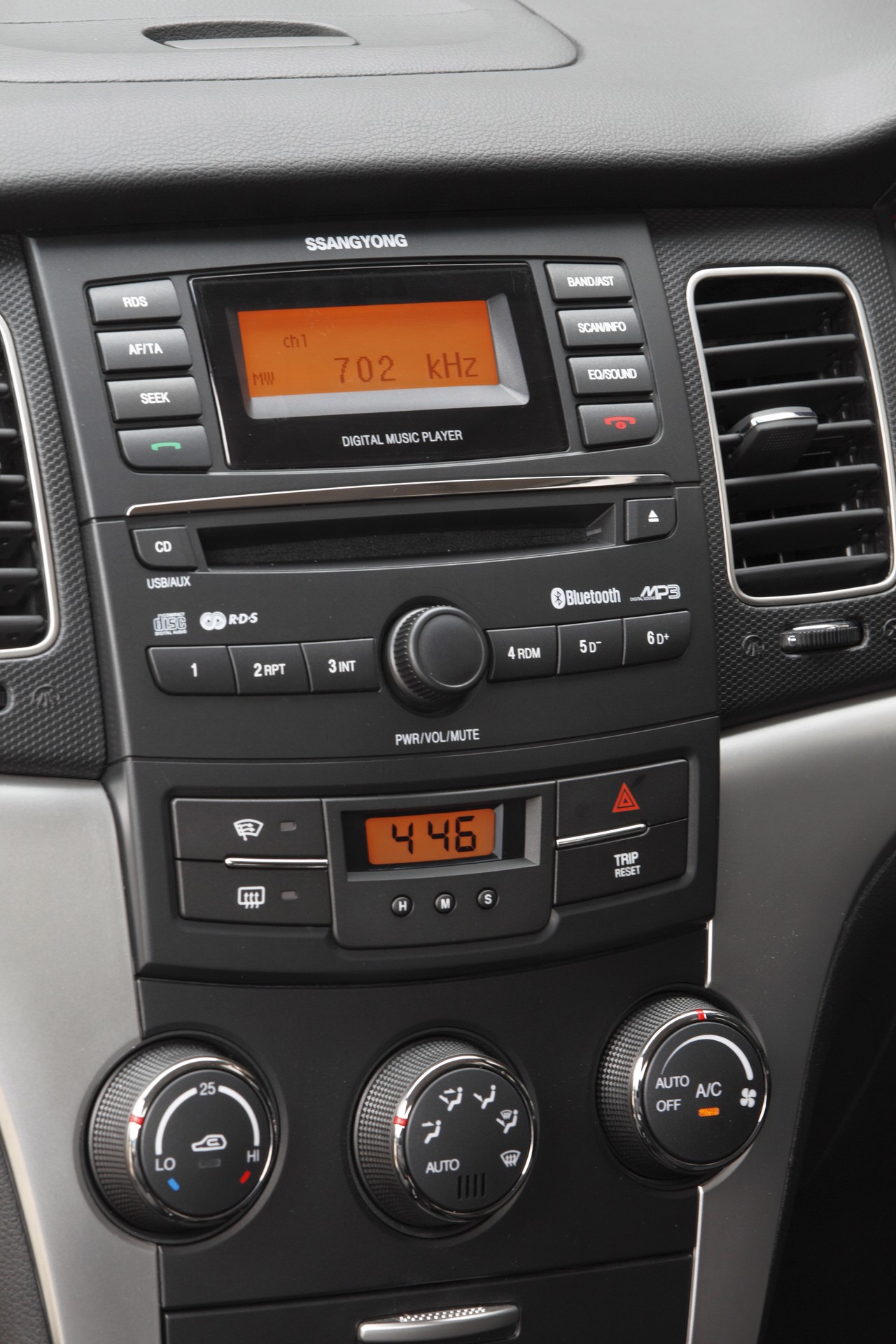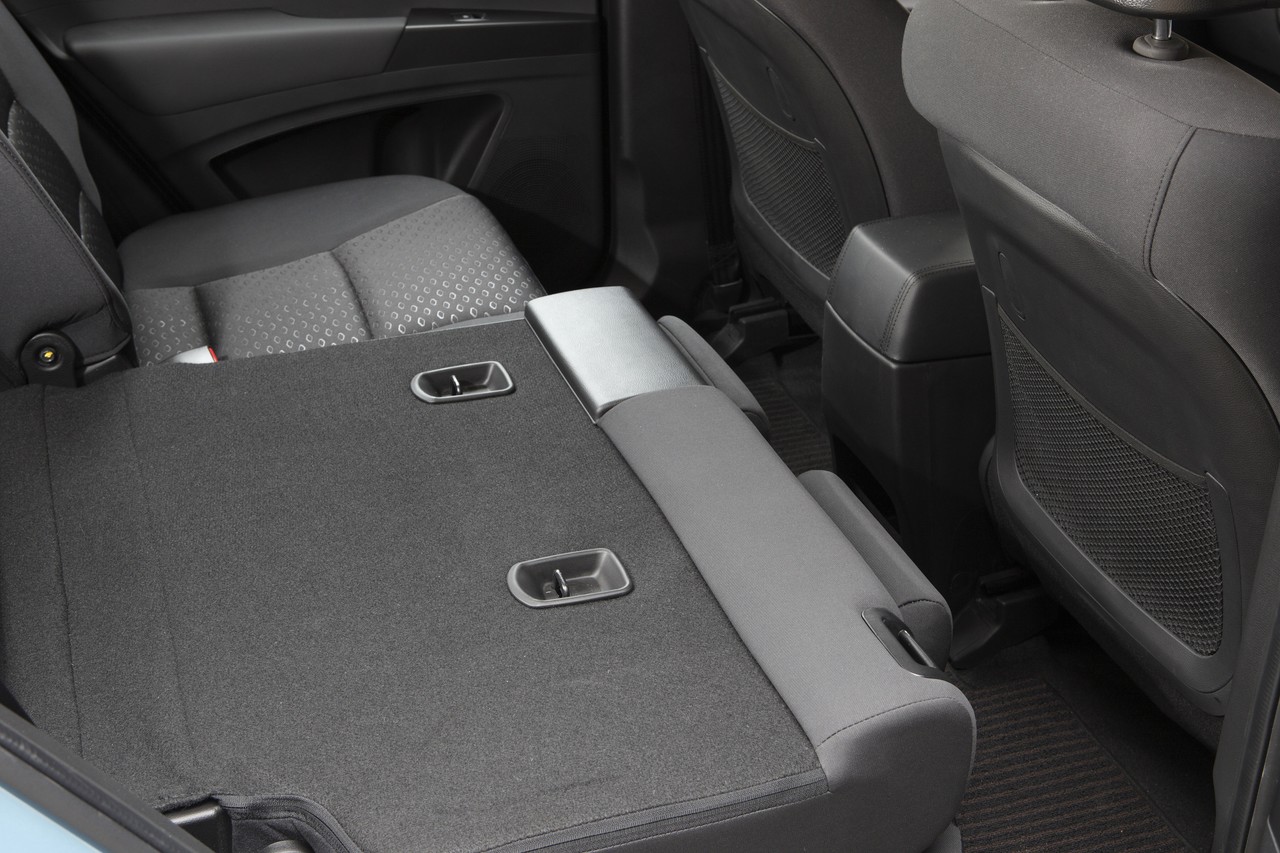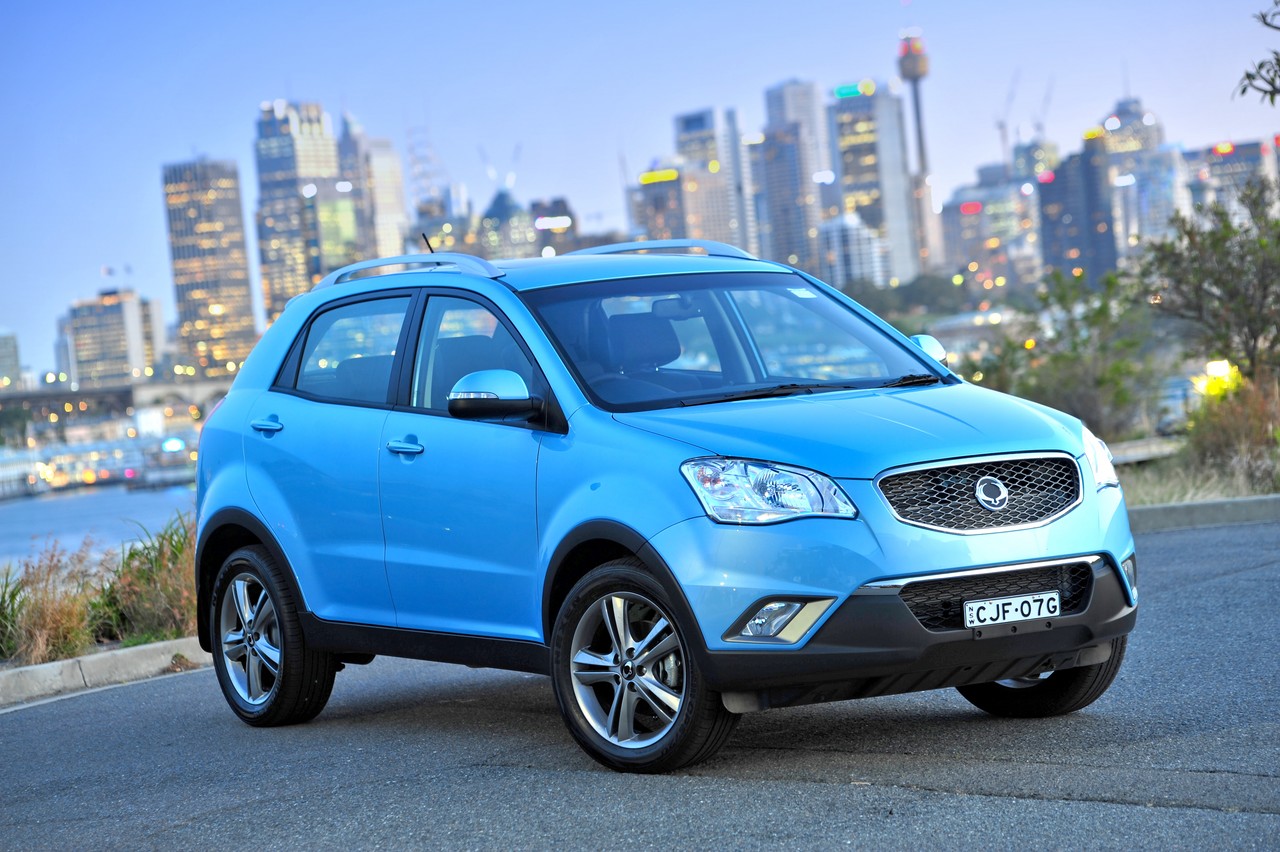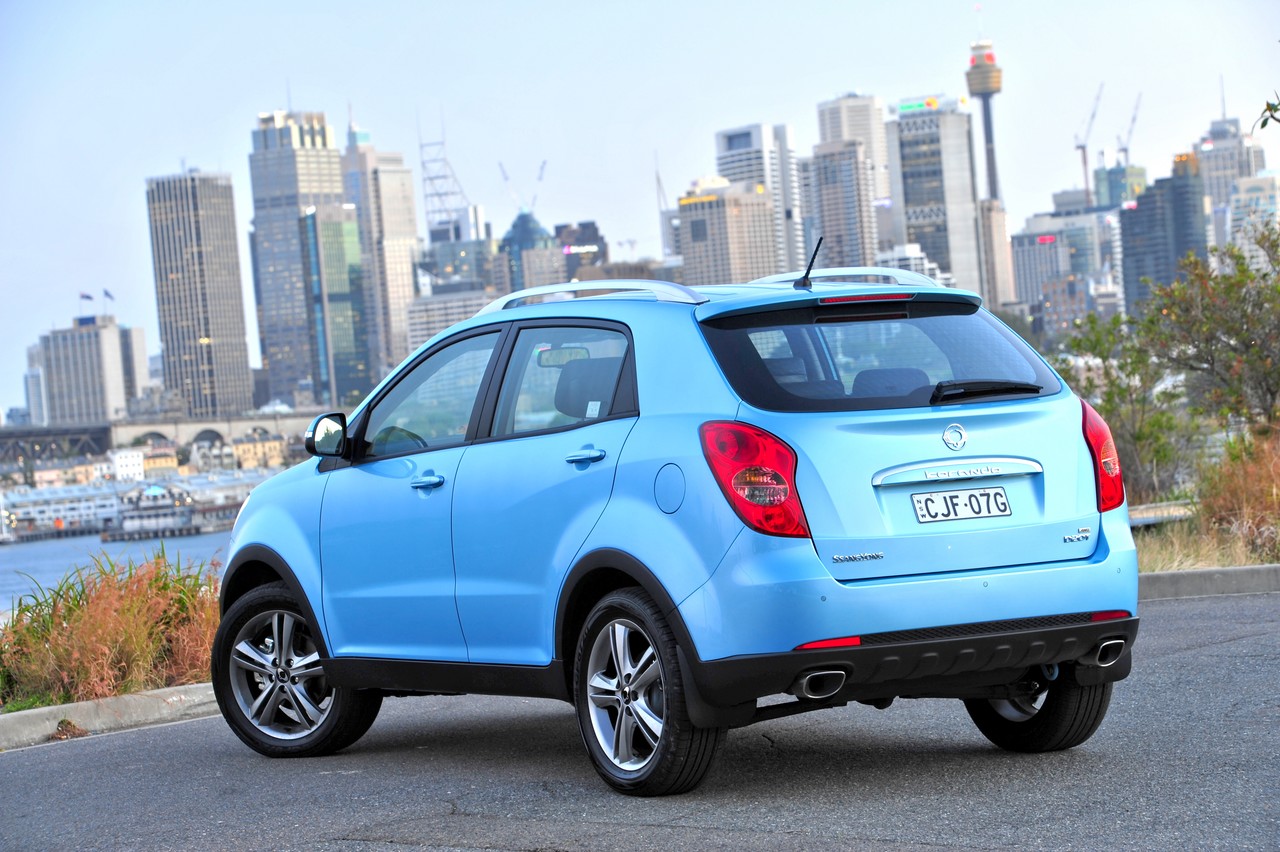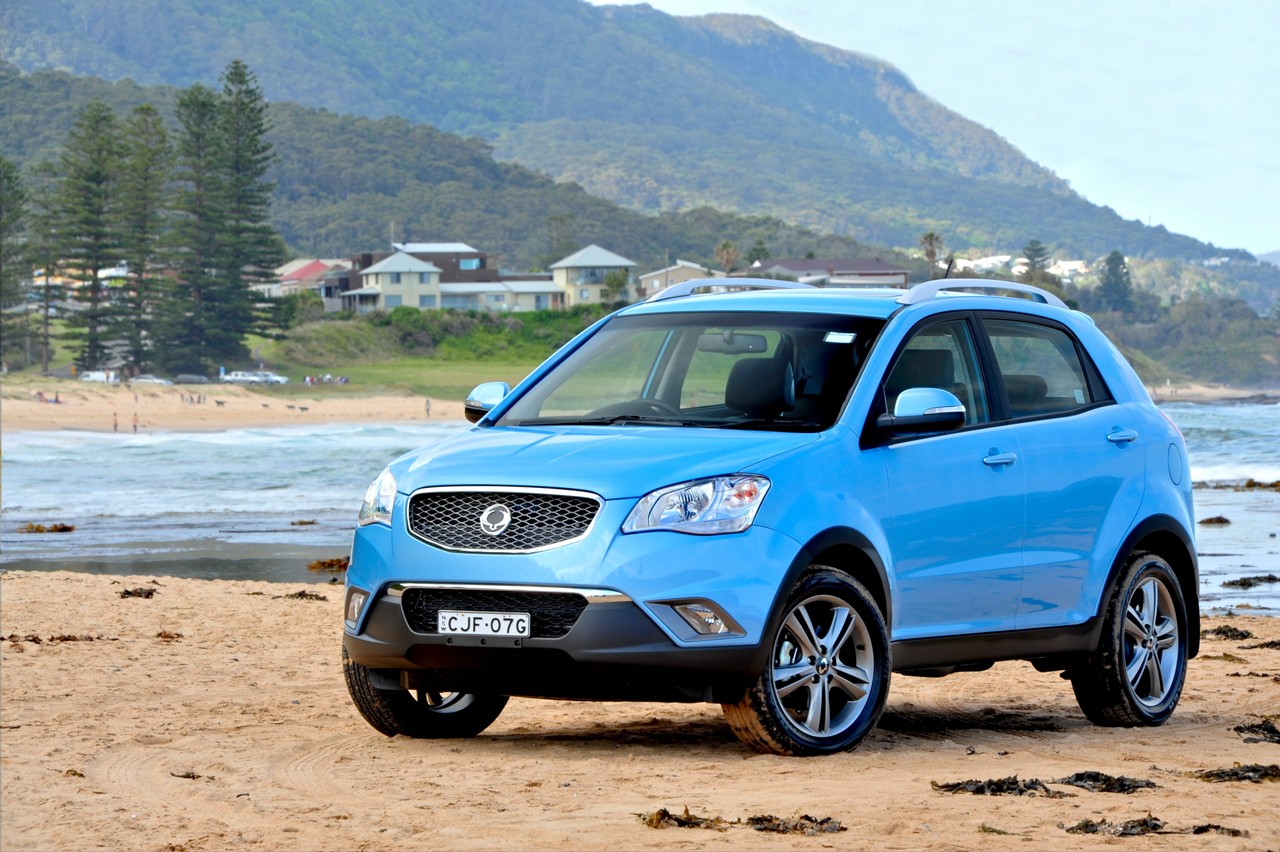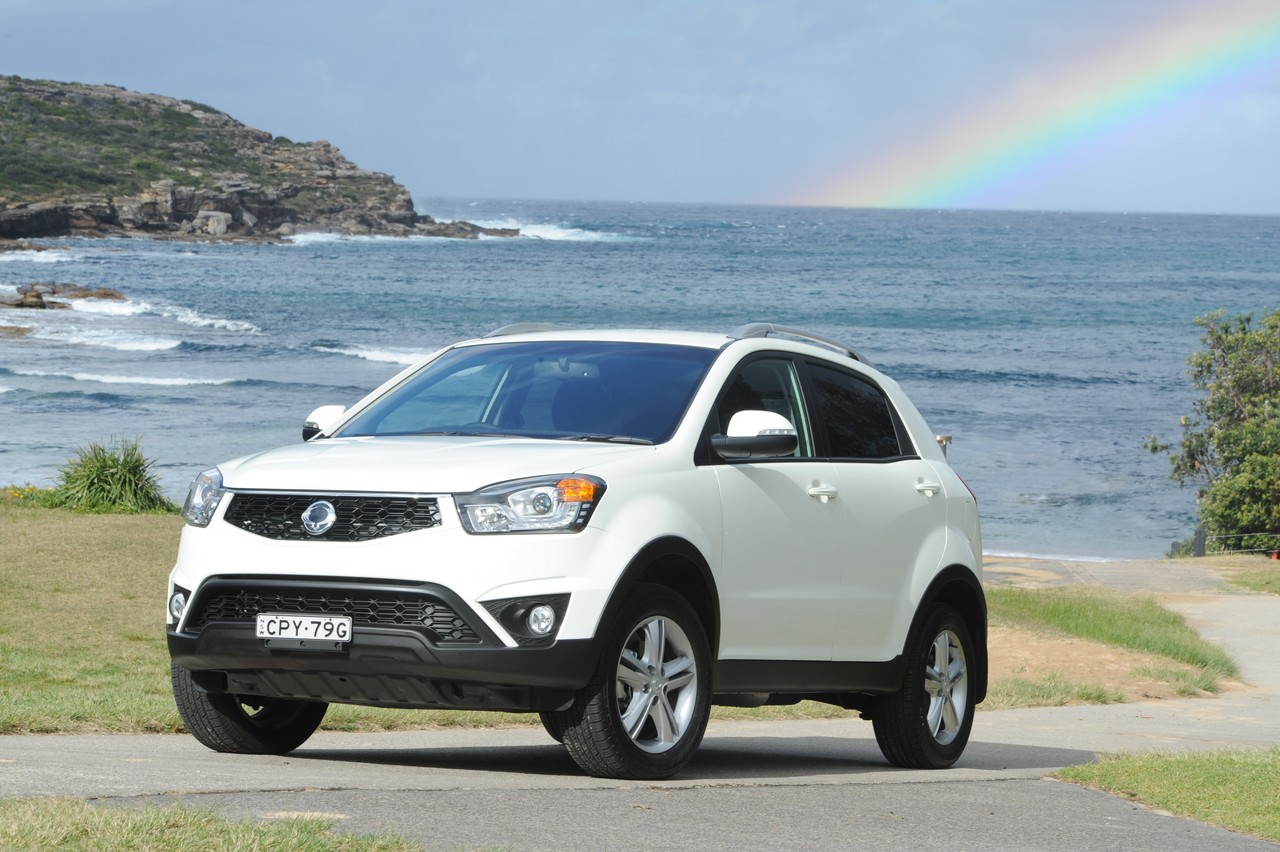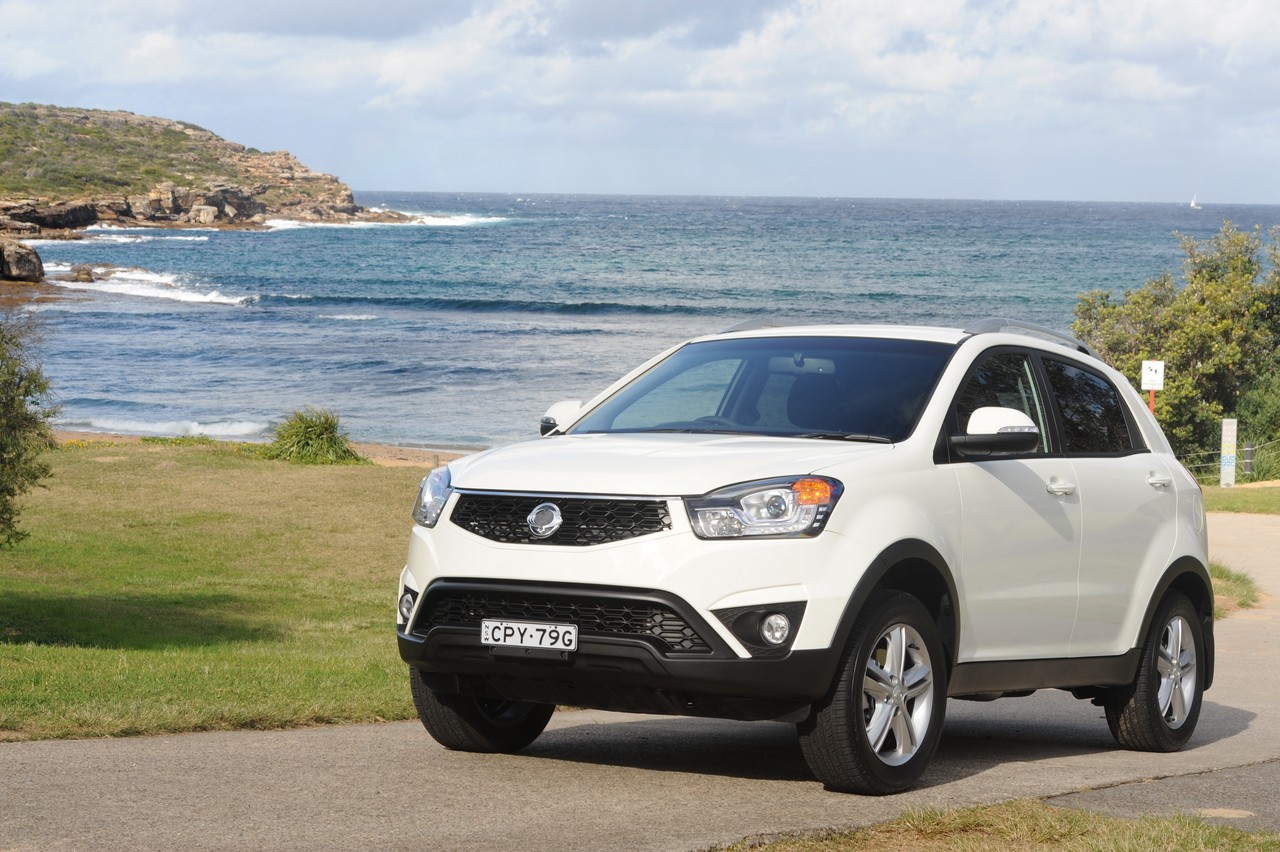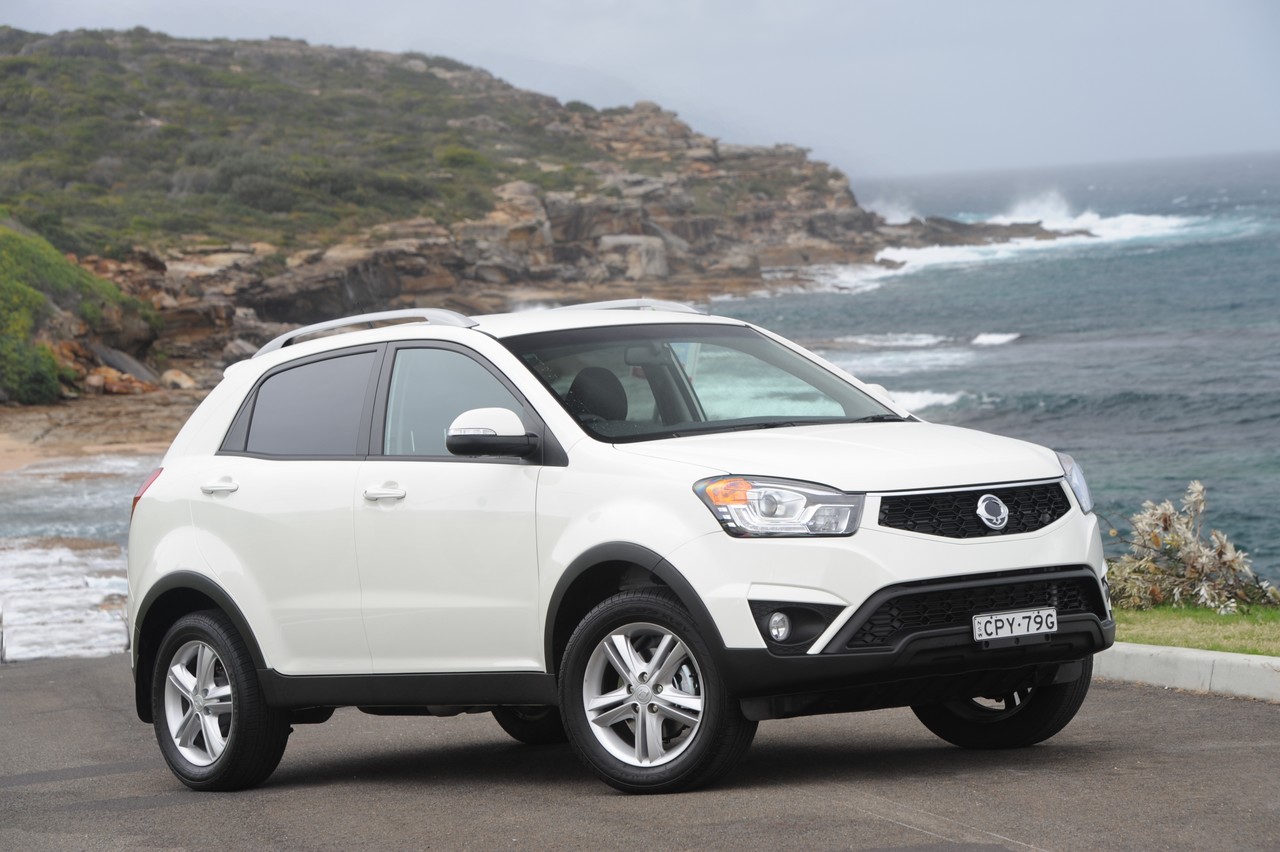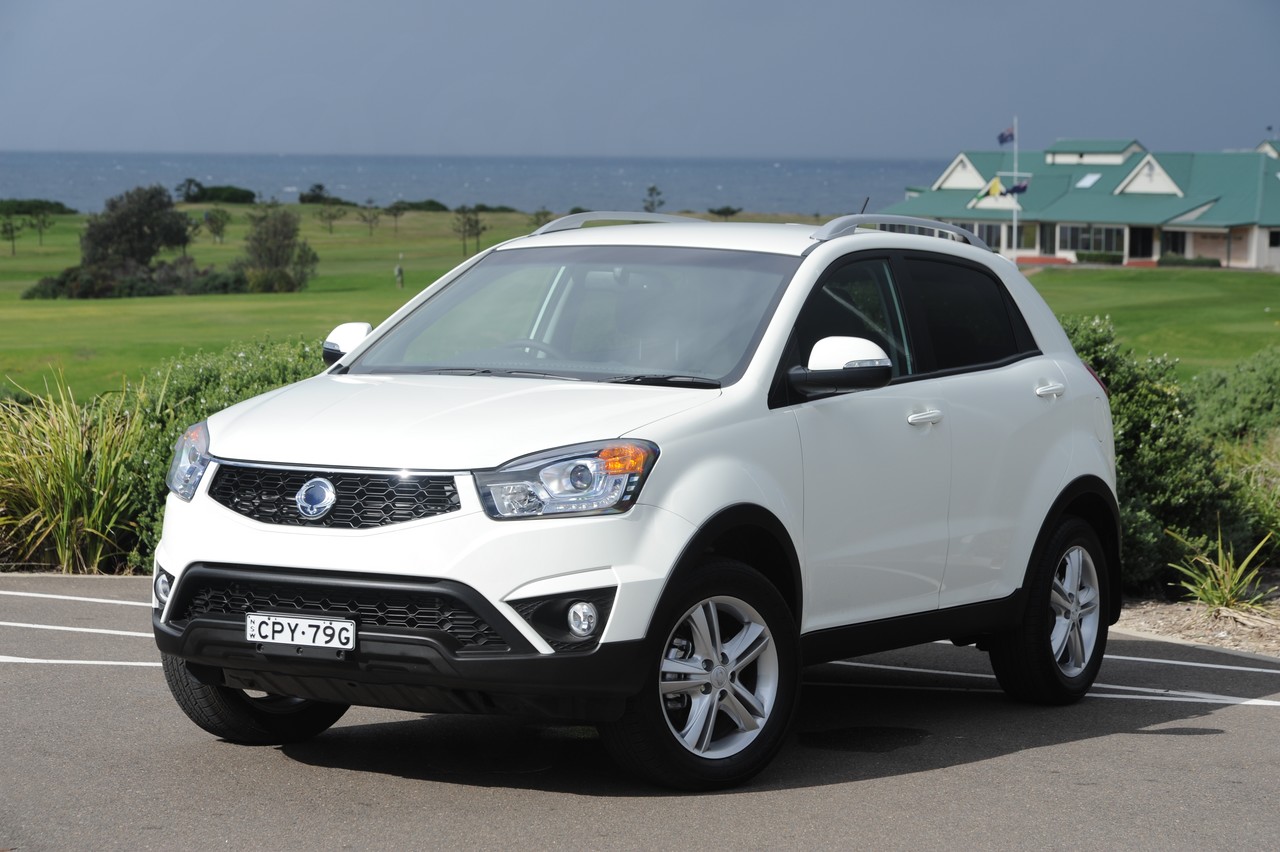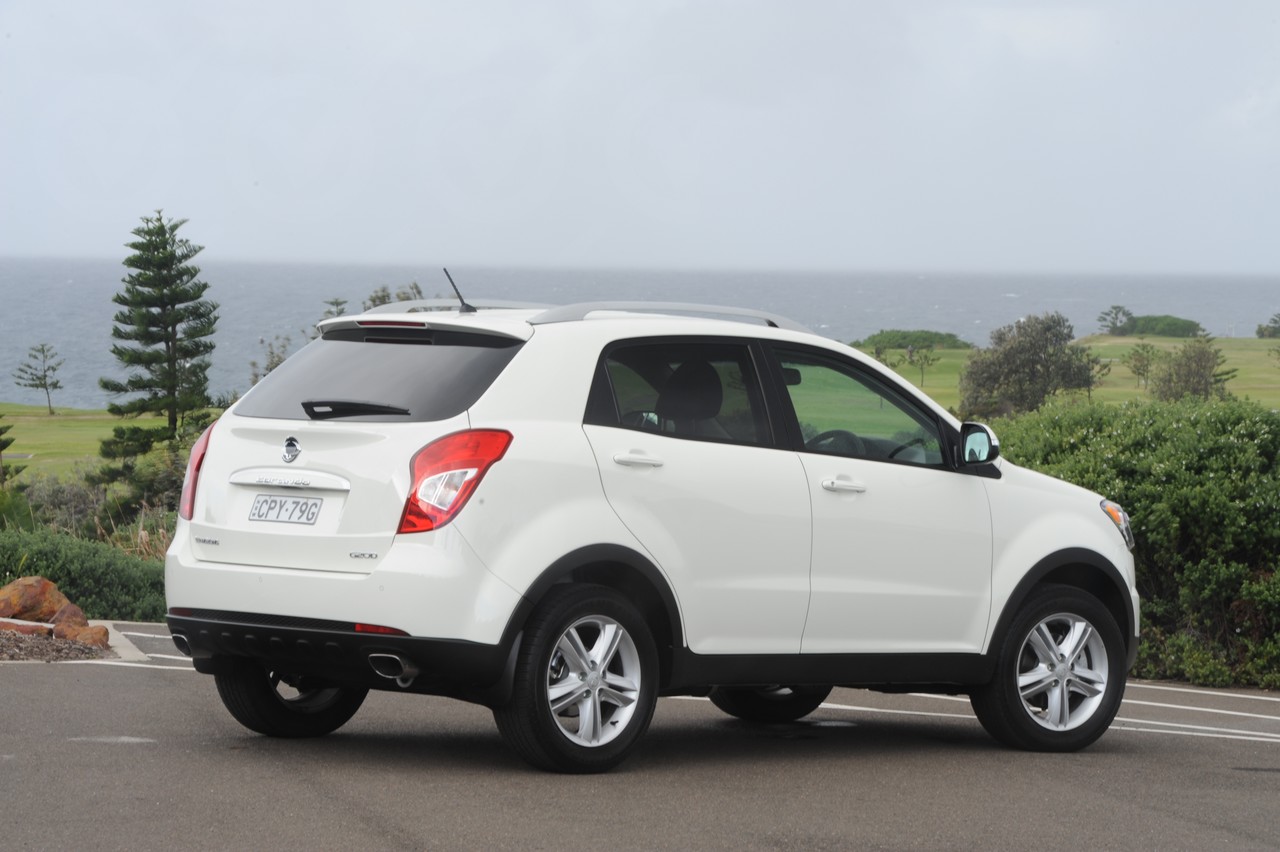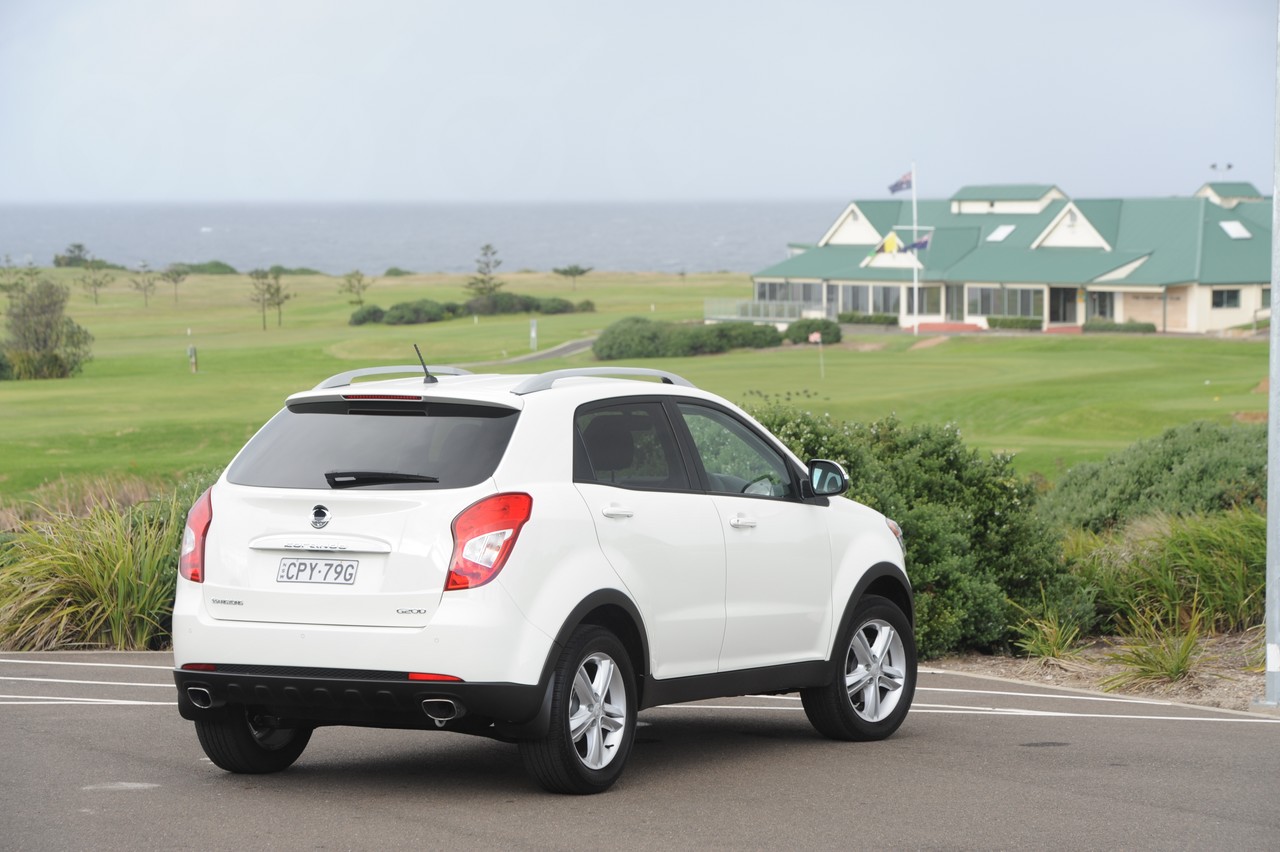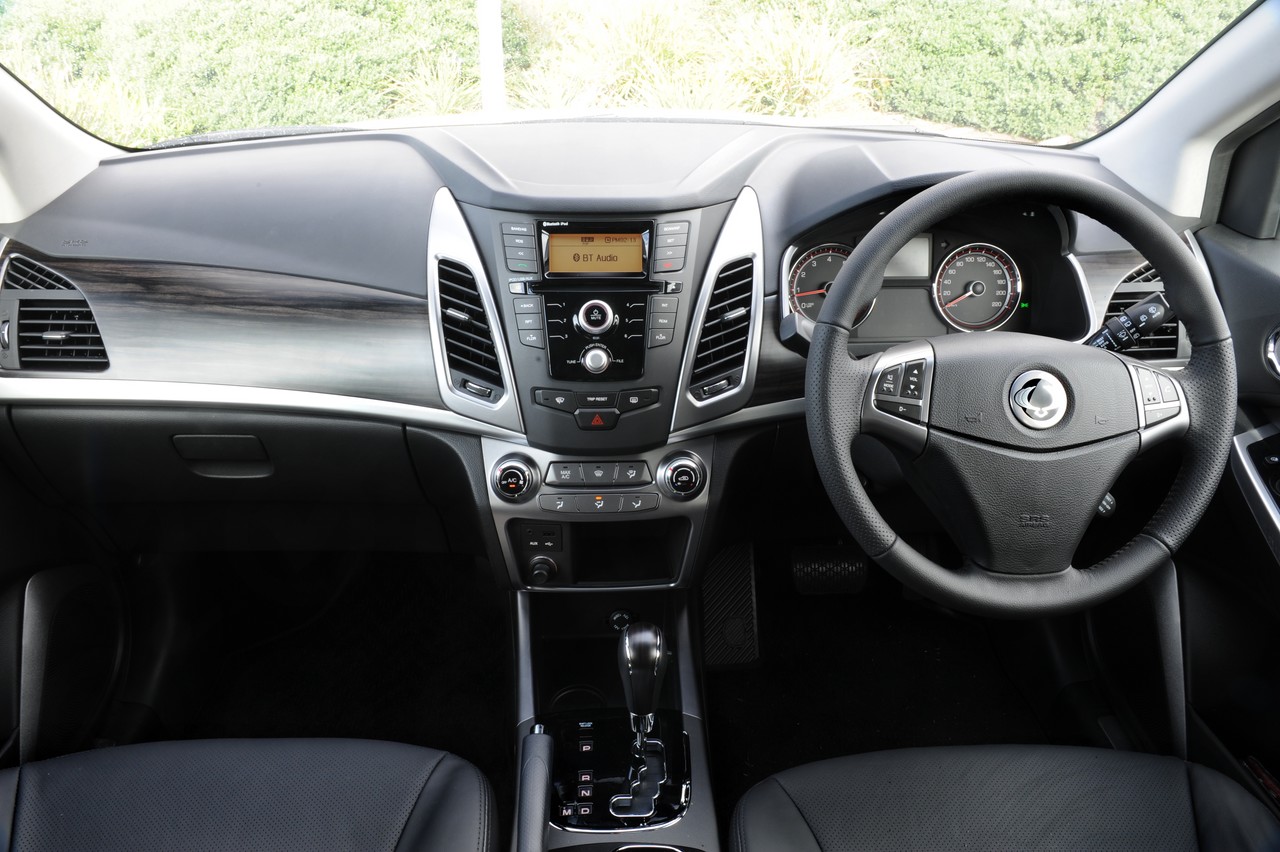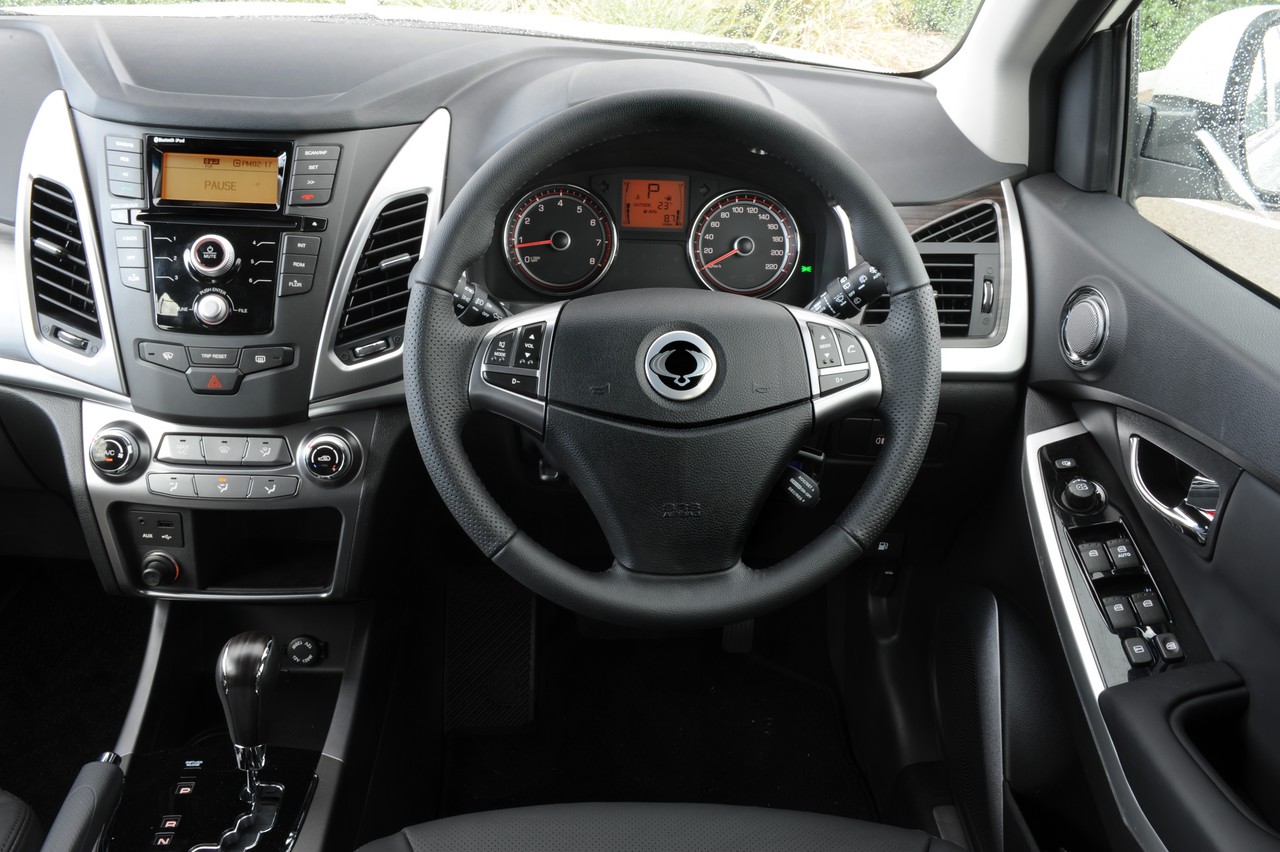
- Refined 2.0-litre turbo-diesel engine
- Comfortable ride
- Good interior and load space
- Vague steering
- Turbo lag from diesel engine
- 2.0-litre petrol engine lacks low-rev torque
- Cabin lacks sound insulation
- Steering wheel lacks reach adjustment
Review: Ssangyong C200.I Korando (2011-14)
Overview
Released in February 2011, the Ssangyong C200 Series I (C200.I) Korando was a five-seat SUV, available with front- or all-wheel drive. Manufactured in Pyongtaek, South Korea, the C200 Korando was initially available with a 2.0-litre four-cylinder diesel engine, though a 2.0-litre four-cylinder petrol engine was introduced in February 2013.
Engines
Of the engines,
- the 2.0-litre D20 DTF diesel engine had a variable-geometry turbocharger, common-rail fuel injection, double overhead camshafts, four valves per cylinder, exhaust gas recirculation, a particulate filter and compression ratio of 16.5:1; and,
- the 2.0-litre G20 DF petrol engine had double overhead camshafts, four valves per cylinder and a compression ratio of 10.5:1.
Both engines were available with six-speed manual and six-speed automatic transmissions.
Dimensions and suspension
The C200 Korando was 4410 mm long, 1830 mm wide, 1675 mm tall and had a 2650 mm wheelbase; ground clearance was 182 mm. Furthermore, the Korando had MacPherson strut front suspension and multi-link rear suspension.
| Engine | Years | Drive | Variant | Trans. | Peak power | Peak torque |
|---|---|---|---|---|---|---|
| 2.0-litre turbo-diesel I4 | 2011-14 | FWD | S | 6sp man., 6sp auto |
129 kW at 4000 rpm | 360 Nm at 2000-3000 rpm |
| AWD | SX | 6sp man., 6sp auto |
||||
| SPR | 6sp auto | |||||
| 2.0-litre petrol I4 | 2013-14 | FWD | S | 6sp man., 6sp auto |
109 kW at 6000 rpm | 191 Nm at 4000 rpm |
AWD system
In normal conditions, the C200 Korando’s all-wheel system directed all of the engine’s drive to the front wheels. In the event that traction was lost, however, an electronically-controlled coupling could be activated to direct up to 50 per cent of the engine’s torque to the rear wheels. The on-demand all-wheel drive system also included a ‘lock’ mode which provided a 50:50 front:rear torque split for speeds below 35 km/h.
Safety equipment
Standard safety equipment for the C200.I Korando included dual front airbags, front side airbags, full-length curtain airbags (i.e. for front and rear occupants), ABS, electronic brake force distribution, brake assist, electronic stability control (with Ssangyong’s ‘Active Rollover Protection’), traction control, hill start assist, electronic stability control, active front seat head restraints and front seatbelts with pretensioners and load limiters.
Features
Standard features for the Korando S included 16-inch alloy wheels (including a full-size spare), a six speaker sound system with USB connectivity and Bluetooth streaming, air conditioning, cruise control, a leather-wrapped steering wheel with audio controls, 60/40 split and folding rear seats, remote central locking, power windows and heated mirrors, a tilt-adjustable steering wheel, a height adjustable driver’s seat, an electrochromatic rear view mirror, 12 volt power outlet, trip computer, an alarm and immobiliser.
The Korando SX was further equipped with 17-inch alloy wheels, climate control air conditioning, front fog lamps, vanity mirrors, a rear cargo cover and cargo net.
The range-topping Korando SPR added 18-inch alloy wheels, leather seats, heated front seats, power adjustable driver’s seat, rear parking sensors, power folding door mirrors, power sunroof and a rear spoiler.
Brochure
Review: Ssangyong C200.II Korando (2014-16)
Overview
Released in Australia in May 2014, the C200 Series II (C200.II) Korando introduced a simplified range that consisted of front-wheel drive S variants that were powered by 2.0-litre petrol engines and all-wheel SX variants powered by 2.0-litre turbo-diesel engines. In December 2014, however, SX variants with 2.0-litre petrol engines were introduced.
Visually, the C200.II Korando could be identified by its revised front mask with squared-off headlights, black-mesh grille and wider low-level air intake; at the rear, there were new tail-light clusters. Inside, the C200.II Korando had a redesigned dashboard with soft-touch materials.
Other changes for the C200.II Korando included new reinforced engine mounting brackets to reduce engine noise and new rubber bushes for the car’s reinforced sub frames to reduce vibrations.
| Engine | Drive | Variant | Trans. | Peak power | Peak torque |
|---|---|---|---|---|---|
| 2.0-litre petrol I4 | FWD | S | 6sp auto | 110 kW at 6000 rpm | 197 Nm at 4000 rpm |
| 2.0-litre turbo-diesel I4 | AWD | SX | 6sp auto | 129 kW at 4000 rpm | 360 Nm at 2500 rpm |
Safety equipment
Compared to its C200.I predecessor, safety equipment for the Ssangyong C200.II Korando was unchanged.
Features
Standard features for the Ssangyong Korando S included 17-inch alloy wheels with 225/60 R17 tyres, a six speaker sound system with MP3-compatibility and auxiliary inputs (3.5 mm/USB/iPod), air conditioning, leather seats, heated front seats, cruise control, front and rear fog lights, rear parking sensors, a leather-wrapped steering wheel with audio controls, 60:40 split rear seats, remote central locking, power windows, power adjustable and heated door mirrors with retracting function, a height adjustable driver’s seat, a tilt adjustable steering wheel, illuminated vanity mirrors, an anti-glare rear view mirror, carpet mats, rear privacy glass, a luggage cover and net, silver roof rails, trip computer, an immobiliser and alarm.
The Korando SX was further equipped with climate control air conditioning, heated rear seats, automatic headlights and rain-sensing wipers.
Related links
- Specifications: Ssangyong C200.II Korando (February 2014)
- Ssangyong Australia: Ssangyong Korando
- Wikipedia.org: Ssangyong C200 Korando
